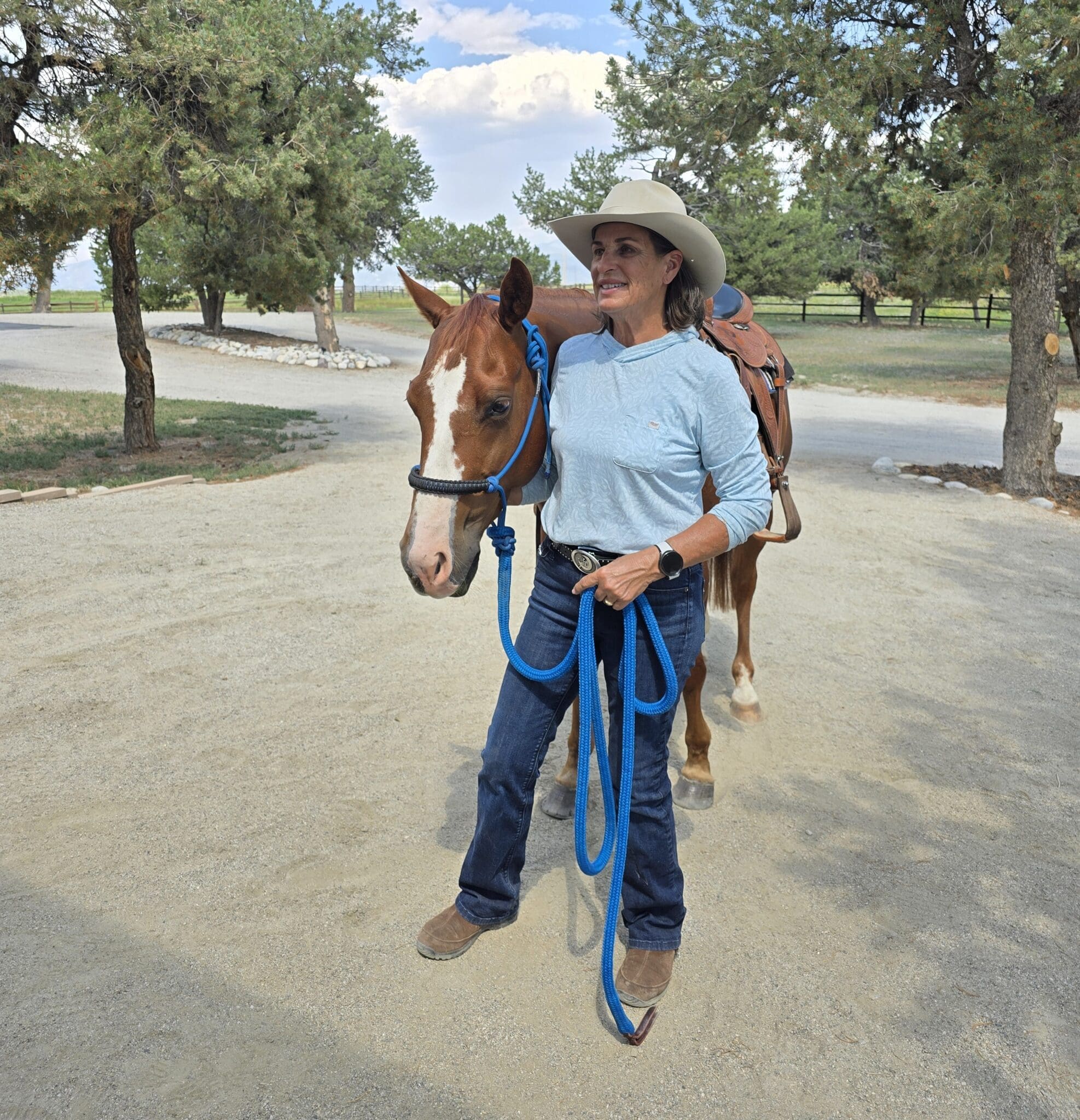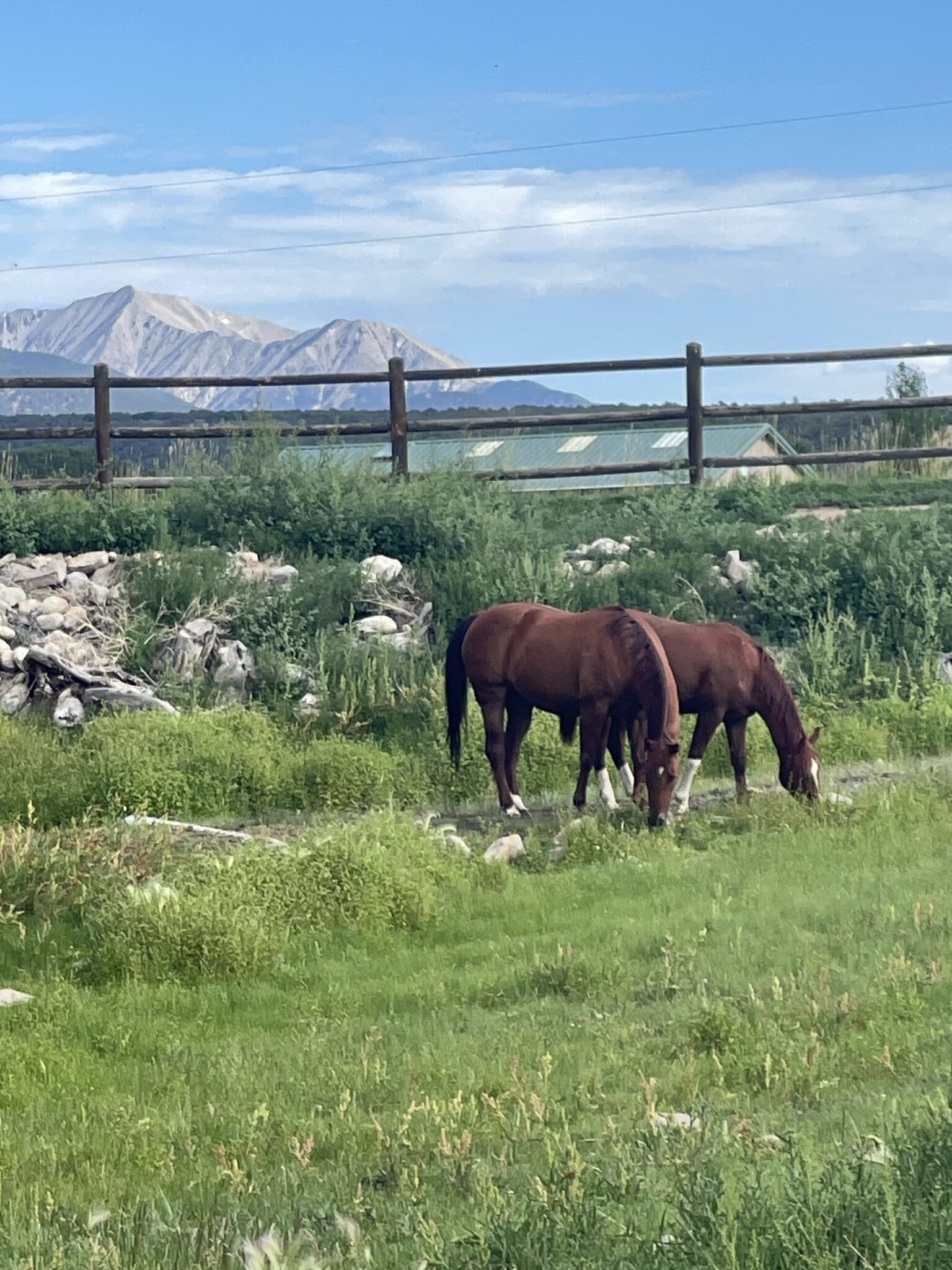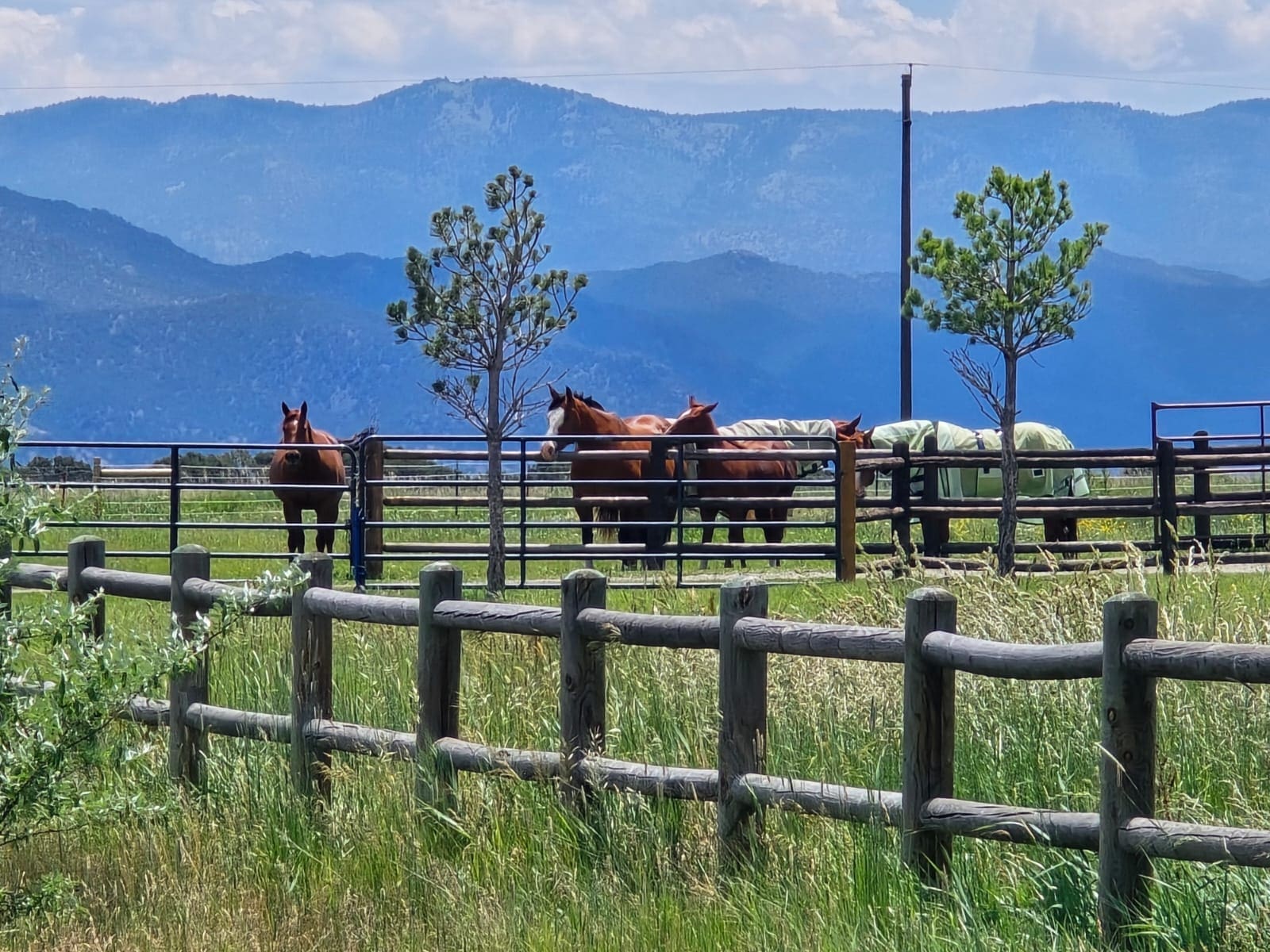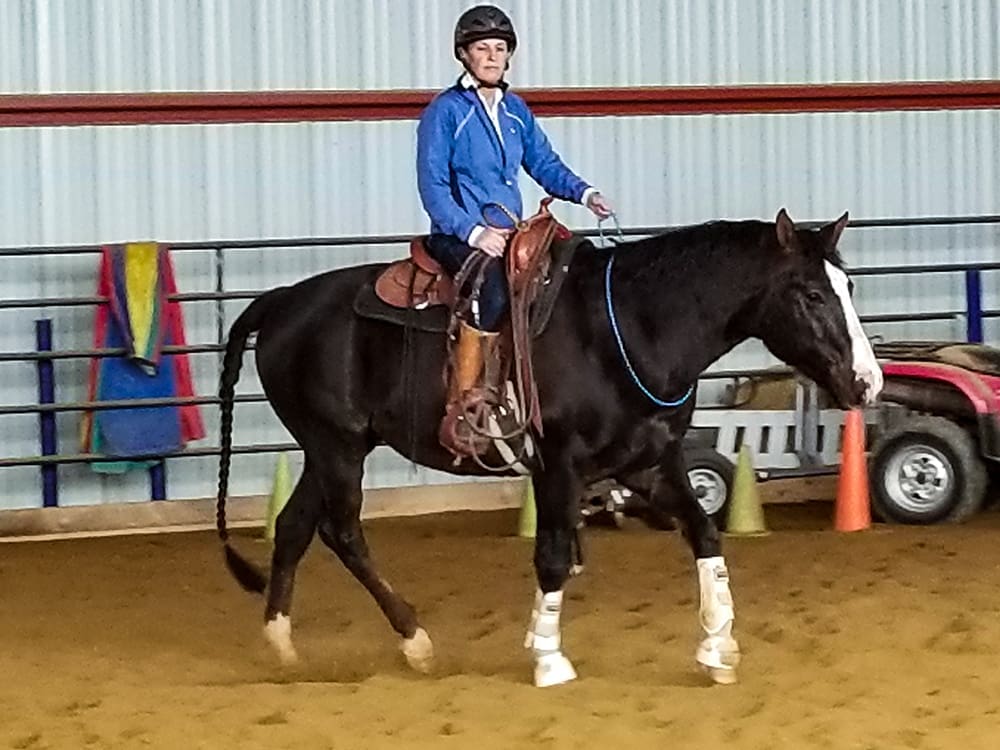I just returned from a week in Queen Creek AZ (just outside Phoenix), for a Horse Master shoot. We taped nine episodes of the TV show in just four days at the Horseshoe Park & Equestrian Centre and the weather couldn’t have been more perfect. Although the mornings were a little chilly, since we start taping at first light, by mid-morning it warmed up considerably and we had clear sunny days in the 70s—each day a perfect clone of the one before.
The shoots are long hard days for cast and crew. We start rolling at first light, and for at least two nights at this shoot, we were scrambling at the end of the day to get the last few minutes of usable light. After shooting 84 episodes of the show, we have gotten it down to a system and the past few shoots have gone so smoothly that we’ve gotten a little spoiled, but this one was a little different. The first day of this shoot was like pulling teeth—there was no one problem you could blame but a series of road blocks that put us behind schedule before we even started. Before the sun came up, we found out that the city was scheduled to haul in a dozen dump trucks load of gravel, driving right behind the arena. Our mics are so sensitive that they pick up high-altitude jets—dump trucks would totally overpower the audio and not be the loveliest backdrop for a TV show. Fortunately for us, the foreman of the crew was very cooperative and they agreed to wait at the gate until they got the “all clear,” message by cell phone and then they would hurry in while we were setting up for the next scene.
There were other issues that first day of the shoot, like loading cattle into a semi right next to the arena, the usual equipment problems and, oh yeah, one of our cast members didn’t show up. That’s the first time we’ve ever been totally stood up—no call no nothing. But we always have alternates standing by, so with a slight rearranging of the shoot schedule, we were good to go. It pays to be flexible when you are working with horses (and horse people). To top it all off, at the end of the day we needed a Paint horse to shoot some commercial footage, so a guy we met at on Sunday (who was competing at the facility) agreed to haul his very cute Paint horse back to Queen Creek from Tucson (90 minutes) so we could shoot 30 seconds of footage. As luck would have it, his truck broke down on the way but he managed to unload the horse just in time for us to throw on the blanket and shoot literally the last 30 seconds of sunlight of the day. He was a real champ to haul his horse all that way just for a free blanket—albeit a VERY nice blanket. Thank goodness this day was finally over!
Fortunately the three remaining days of the shoot went off without a hitch and although we worked long days, we got all the episodes done (plus an extra) and commercials and promos and all the other little odds and ends that goes along with producing a TV show (the opening shots, the segues, the “quick tips”, the show openers, etc.). We had some great topics at this shoot, including a horse that balked and walked sideways whenever she came to something she didn’t like. That turned out to be an easy fixed because although the horse was not well-trained, turned out all the rider needed to do was use her legs and reins correctly and insist the horse go straight—and she willingly complied. We also had a young man riding an ex-barrel horse that was arena-sour that had bucked him off a few times, causing a serious erosion to the rider’s confidence. Turns out a lack of confidence is not just the domain of middle aged women—anyone, including an adolescent teenager can experience a crisis of confidence. The horse was actually pretty nice and the young man just needed to direct his focus toward something positive instead of wondering when the next time the horse was going to buck him off (I call this mind pollution; sound familiar?).
We had a novice rider on a cutting horse who wanted to learn how to cue her horse correctly so that she didn’t deteriorate the young mare’s training, so we worked on the correct cue for backing. The episode we thought was going to be about retraining a lazy horse to be responsive to leg aids turned out to be a horse that was not so lazy at all, but the rider was mis-cueing the horse and she just needed to know how to cue for the extended walk. Funny how often the episodes are on a totally different subject than we planned. It’s uncanny how often the horses won’t display the “problem” once we turn the camera on.
We’re three for three now on water crossing episodes—in each case, including the one at this shoot, the so-called “problem horse” walks right in the water. This one was a really cute Morgan gelding and although he did not walk right in the water, it didn’t take much to get him there. The actual “problem” was a rider that made the mistake of pulling back on the reins when she wanted the horse to go forward, resulting in a horse that started backing up whenever there was something he didn’t really want to do. Sitting here reading this, you are probably saying to yourself, “what an idiot, pulling back on the reins when you want to go forward.” But you’d be surprised how common that is—how many riders pull back on the reins inadvertently when asking the horse to go forward—I see it all the time. Combine the conflicting signal with a horse that doesn’t really want to do that anyway, and you end up with a balking, refusing horse. And pulling back on the reins when the horse is backing does not stop him but makes him back harder. In this case, the rider was very quick to figure out her mistake and, even more impressive, she was able to fix it right away. Problem solved.
Everyone’s favorite episode turned out to be a really sweet roan mare who has been star gazing for years (very high-headed, above the bit). She was a 16 year old mare and the owner has had her for six years, so she’s been doing it at least that long. The underside of her neck was really over developed and bulging but I could tell it was not from her conformation, but rather from years (a decade perhaps?) of fighting the bit and resisting contact. I changed the bit to one that I knew would help (the Myler MB36/HBT shank Myler Bits) but it took me a long time (20 minutes or so) to get her to find the release by lowering her head in response to pressure instead of raising it. But once she got it—she got it! And the owner was able to carry on and they showed tremendous progress. The smile on the owner’s face said it all.
We also had a gelding that had learned the nasty trick of ripping his nose away and running away from you whenever he didn’t want to do something like longe or load in a trailer. He really gave us a “run for our money” and sent us scrambling across the arena after him on several occasions. Fortunately most horses never learn this trick—to throw their body weight around and run away from you, but if you’ve ever experienced it, you know it to be a huge problem. I won’t say we cured this horse, because that is definitely learned behavior and you cannot unlearn something. But I did give the owner some additional tools to help deal with it and we got some positive response from the horse.
Our final two episodes were part one and two of the same story—taking a young horse through the round pen training process. Going way beyond just running the horse around the pen, but going through each step—driving and herding the horse, controlling the speed, teaching the inside turn and hooking on. It was silly to think we could do all that in one half-hour episode (which is actually only about 20 minutes of content), so we did the to-be-continued thing and made a second episode out of it. The filly made some great progress, especially in the second episode, so I think it will be good.
It’s a long process from taping the shows to when they actually air, but at least the hardest part is done and they are “in the can,” which is an old-fashioned term from back in the day when film was actually used and it was stored in cans. Now, of course, everything is digital and stored on tapes and hard drives, hence the term “taping” a show as opposed to “filming” a show. These shows will air in May and June and by then we will have taped another eight episodes in San Diego in April, our final shoot for the 2010 season.
A big thank you to all my crew and cast—it takes a lot of people to put together a TV show and we appreciate everyone’s help. We have a permanent crew of 6-7 who attend every shoot and have specific and technical jobs; plus we rely on 4-5 local volunteers at each shoot to help with everything from horse boogers to lighting. We work hard during the shoots, but we have a good time too. By the end of the week, we are all pretty much comatose, but it is a good tired.
Enjoy the ride,
Julie
Join Julie Goodnight’s Library Membership to access all of the Horse Master Episodes



